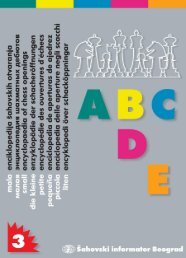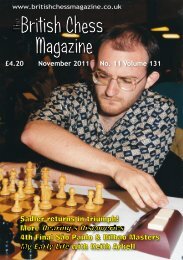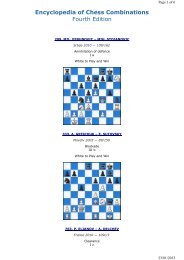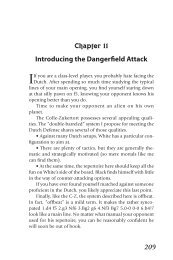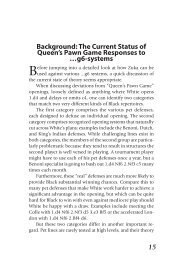The Sicilian Defence Lubomir Ftacnik - Chess Direct Ltd
The Sicilian Defence Lubomir Ftacnik - Chess Direct Ltd
The Sicilian Defence Lubomir Ftacnik - Chess Direct Ltd
Create successful ePaper yourself
Turn your PDF publications into a flip-book with our unique Google optimized e-Paper software.
Introduction<br />
From Russia Sicily with Love<br />
First I would like to express my gratitude to the reader for opening this book on the <strong>Sicilian</strong><br />
<strong>Defence</strong>. Credit must go to the Quality <strong>Chess</strong> team and their excellent authors whose efforts<br />
resulted in the creation of a real buzz about the Grandmaster Repertoire series. To follow in the<br />
footsteps of the previous titles made for a daunting challenge and I hope that the present book,<br />
the sixth volume in the series, will live up to the readers’ high expectations.<br />
<strong>The</strong> unparalleled popularity of the <strong>Sicilian</strong> has led to the creation of an entire chess galaxy that is<br />
too vast for even the best and brightest minds to comprehend fully. Each player chooses his Kan,<br />
Sveshnikov, Dragon or other pet variation, around which he creates his own <strong>Sicilian</strong> world. My<br />
own modest expertise lies in the domains of the Najdorf and Scheveningen systems, which I have<br />
been playing and studying over the past two decades. <strong>The</strong> Scheveningen system represents a kind<br />
of foundational core, from which virtually all knowledge about thematic <strong>Sicilian</strong> structures and<br />
plans can be traced. Although the official subject of this book is the Najdorf variation, the two<br />
systems share many common themes and can often transpose to one another. In certain places,<br />
such as Chapters 12 and 13 (which deal with the variations 6.f4 and 6.¥e2 respectively), the<br />
decision to recommend the response 6...e6, instead of equally valid alternatives such as 6...e5,<br />
was influenced by my fondness for the Scheveningen set-up. I make no apologies for this, as I<br />
believe that an author can make the most useful contribution when writing about his own areas<br />
of expertise.<br />
At the end of the day this repertoire book is about cherry-picking the best and brightest ideas<br />
from the enormous jungle of variations available. In some sense the repertoire is notable not only<br />
for the recommendations that were included, but also for the attractive ones that (sometimes after<br />
agonizing deliberations) did not make the final cut. <strong>The</strong> whole <strong>Sicilian</strong> <strong>Defence</strong> creates something<br />
of a ‘win-win’ situation, in the sense that the unbalanced positions often result in bloodshed for<br />
one side or the other. In some variations Black may have to defend for a while, but it rarely kills<br />
his chances for a subsequent counterattack and ultimate success.<br />
I have tried to address all the most important ideas in every chapter, but practice will inevitably<br />
bring some new challenges, so please be prepared for some surprises. Nobody can foresee the<br />
future – it is often difficult enough to ‘predict’ the past (just ask any decent historian).<br />
I have often hankered for a bit of colour in our seemingly dry, black and white world of technical<br />
annotations, symbols and diagrams. As a young man I came across a game that is played in social<br />
situations, involving association with the names of films. Movies can often be symbolic, full of<br />
cultural references and associative bridges – evoking colours and emotions unlike any other form





